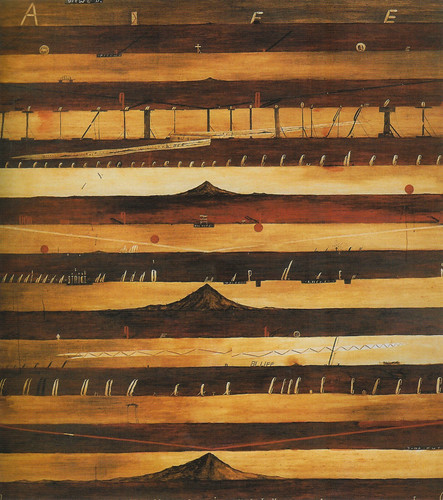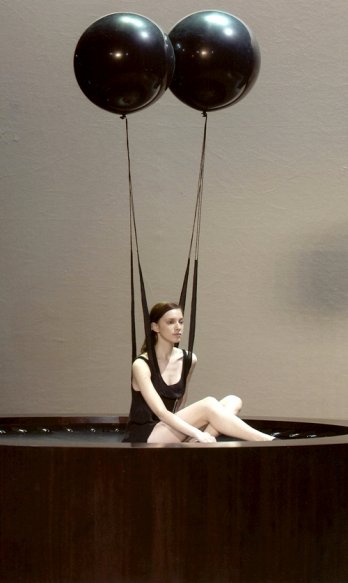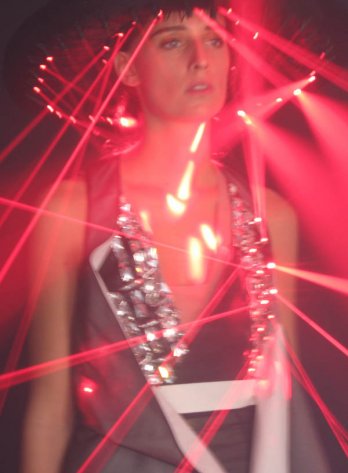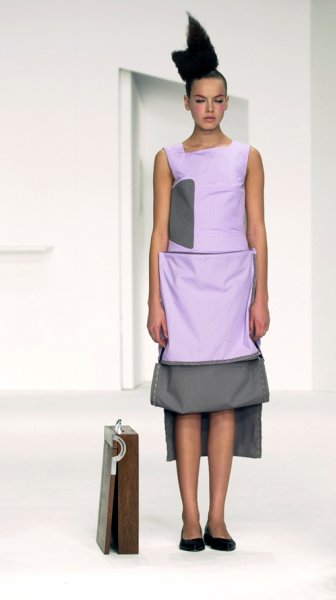Celebrated for his gigantic, stainless steel Cloud Gate sculpture in Chicago’s Millennium Park, Anish Kapoor is changing the cultural environment with his public works.
Research Kapoor's work in order to discuss whether it is conceptual art or not. Explain your answer, using a definition of conceptual art. 
Conceptual art is art in which the concepts or ideas involved in the work take precedence over traditional aesthetic and material concerns. Many of the works, sometimes called installations, of the artist Sol LeWitt may be constructed by anyone simply by following a set of written instructions.”In conceptual art the idea or concept is the most important aspect of the work. When an artist uses a conceptual form of art, it means that all of the planning and decisions are made beforehand and the execution is a perfunctory affair. The idea becomes a machine that makes the art.”(Sol LeWitt.).Kapoor's sculptures are frequently simple, curved forms, usually monochromatic and brightly coloured.

Research 3 quite different works by Kapoor from countries outside New Zealand to discuss the ideas behind the work. Include images of each work on your blog.

The sculpture is called “Sky Mirror,” and it’s essentially a large, convex piece of highly polished stainless steel, roughly in the shape of a contact lens. In my opinion, Kapoor use reflection of the light to made a different visual effect, it’s like the water, and I have a feeling this piece is going to be a bit of a tourist sensation.
 What I like about the “Sky Mirror” piece and a related piece now installed at Millenium Park in Chicago called “Cloud Gate” is the way they present a kind of prism through which to view the world.
What I like about the “Sky Mirror” piece and a related piece now installed at Millenium Park in Chicago called “Cloud Gate” is the way they present a kind of prism through which to view the world. 
Where is the Kapoor's work in New Zealand? What are its form and materials? What are the ideas behind the work?

This art work by Kapoor is on Alan Gibbs’ sculpture park at The Farm. Anish Kapoor’s amazing, 84m-long, twisted, red cone. It cuts through a ridge like some celestial megaphone. It was created and designed to withstand the high winds that blow off the cliffs of the North-West cost of the North Island and the Tasman Sea. Its design is similar to the Turbine Hall exhibited in the Tate Modern Gallery in London.
Comment on which work by Kapoor is your favourite, and explain why. Are you personally attracted more by the ideas or the aesthetics of the work?

Tall Tree & the Eye, 2009
Stainless steel and carbon steel
14 x 6 m
Courtesy the artist
Installation: Guggenheim Museum Bilbao, 2010
Photo: Erika Ede © FMGB Guggenheim Bilbao Museoa, 2010
A new sculpture by Anish Kapoor 'Tall Tree and the Eye' is displayed in the courtyard of The Royal Academy on September 22, 2009 in London. Each sphere simultaneously reflects itself, its neighbours and all the components that make up the tower. We see our own repeated reflection and that of the architecture that surrounds us. The angle of the images changes as our gaze moves up the sculpture.Tall Tree and the Eye conveys the transient nature of how things appear. Through its complex use of light and shade, volume and space, it makes us aware of the instability of the visible world. Time and place are suspended and altered. Though it is a very large piece of sculpture it comes across as somehow weightless and ephemeral.
http://www.whosjack.org/anish-kapoor-public-sculptor/
http://en.wikipedia.org/wiki/Conceptual_art
http://www.sepiamutiny.com/sepia/archives/003711.html
http://www.guggenheim-bilbao.es/microsites/anish_kapoor/secciones/galeria_imagenes/galeria_imagenes_detalle.php?idioma=en&id_imagen=29








 Kehinde Wiley Support Army and Look after People, 2007 oil on canvas, 258.4 x 227.3cm
Kehinde Wiley Support Army and Look after People, 2007 oil on canvas, 258.4 x 227.3cm 



